How simple is it that you give a coin, and with a few pushes of buttons, you get what you desire from a machine that has many options to provide? Who thought of it? How could a machine be smart to get instructions right? And How does it know that the object should be given after the payment and selection of the object are done?
It’s the year 1994, and a young student of Computer Science Engineering is in disbelief about how commerce and trade in many businesses work. Back then, most organizations employed a pen-paper mode of communication.
So, he goes ahead and writes his paper on “Formalizing and Securing Relationships on Public Networks” and publishes it to the world.
Bringing the idea of Smart Contracts to the world 28 years ago, Nick Szabo has changed the world of Blockchains and how!
Hold on to your seats, we’re taking a trip to the past, the future, and the present to get you back safely! Let’s go!
In this blog, we’ll be exploring:
- What are Smart Contracts?
- Defining a Smart Contract
- A Brief History
- Need for Smart Contracts
- Working on Smart Contracts
- Features of Smart Contracts
- Tools for Smart Contracts
- Blockchains for Smart Contracts
- Languages for Smart Contracts
- Libraries for Smart Contracts
- Merits of Smart Contracts
- Demerits of Smart Contracts
- Top Uses of Smart Contracts
What are Smart Contracts?
Smart Contracts are literary what their name is – A Smart Contract.
Alright, enough with the wordplay. Smart Contracts are code lines that contain information regarding the transaction that has occurred either between a couple or multiple parties. This property makes it a Contract.
Besides, these code lines execute themselves only when the conditions of the transactions qualify. This automatic execution of codes is why we call it Smart. [How it’s similar to a smartphone or a smart TV.]

Defining a Smart Contract
One could simply define a Smart Contract as
A virtual piece of code containing an agreement between two or more parties and the conditions under which the contract is executed.
A Brief History
Szabo has been in awe of the most primitive smart contract that ever existed – A vending machine.
How easy is it for you to give a coin, and with a few push of buttons, you get what you want from a machine that has plenty of options to provide? How was it built to get it correctly? And how does it understand that the particular object should be handed in after the payment and selection for the object are done?
In addition, the fundamental thought behind Smart Contracts is to contain all the clauses of the deal within a program. A program that can execute itself upon a queue. (when certain conditions meet)
Furthermore, business deals in the 1990s, and to an extent even today, have to deal with paper-based documentation, stamps, signatures, and seals.
The rules and regulations written on paper are tangible and mustn’t be taken for granted. But, the idea is to go digital while creating contracts and signing deals on web space.
In addition, the introduction of Smart Contracts was a way to formalize and secure relationships in a public network, i.e. it ensures that the relationship between two or more formal parties is more secure than before.
The design of Smart Contracts is such that the conditions of the contract, if not met, will return to a null point and show as a transaction that did not occur.
Also, its security is tight due to the presence of cryptographic hashes to encrypt the contract and verifies that the parties involved have rights to it, but a third party can neither access nor alter it.
Not to forget, the idea of automated contract execution has come from contrasting domains such as economics and cryptography, a little cross-communication, and a little knowledge of technology combined with little awareness of its business uses.
This trustless-based contract rids the need for an arbiter to mediate the transaction between the parties.
Need for Smart Contracts
Nick’s Smart Contracts are not a desire but a need. It’s essential for crypto-based transactions that occur in blockchains.
The idea for these conditional contractual code lines containing clauses is that one can formalize and secure formal relationships over the internet.
So, if your publisher is in another country and you have to send money for the publishing fees, you could send ETH instead of hassling for currency exchange.
But would you transfer the fees if the job is not done? No. That’s betrayal, and rude. It also brings up the issue of trust.
Thus, the need for Smart Contracts. Wherein you would transfer the fee only after the Proof-of-Work as per conditions.
Consequently, the transfer of fees would happen if conditions like the ‘publishing complete, ready to ship’ message comes in from your publisher.
Furthermore, Smart Contracts ensure security across the globe on Web3 and take care of trust issues.
Not to forget the multiple uses and advantages of Smart Contracts, especially in an era of Web3 and cryptocurrency.
Working on Smart Contracts
Smart Contracts run on Blockchains that record digital transactions of digital currency and tokens.
How does a Smart Contract work?
Smart Contracts follow the “if/ else/ when…. then… ” protocol of code lines that are written into a blockchain. A network of nodes (network stakeholders and their authorized computer systems) performs the execution of the contracts when the predetermined conditions have been encountered and established.
On the condition the transaction completes, blockchain updates the Smart Contract details. Additionally, the most distinctive feature of deploying Smart Contracts on a block is neither the contract nor the entry on the block can change once it enters the public ledger.
It is visible to everyone in the network and is immutable.
Thus, if you are going to create a Smart Contract, you have to ensure you code it properly with all the details that must be filled in. All the criteria pre-transaction is stated in detail clearly so that the network understands when to deploy the contract.
In any case, if you are unsure of the credibility of your contract, you can try deploying it on testnet blockchains such as Ropsten, GanacheCLI, or Truffle from Ethereum. You may be free to choose a Bitcoin testnet such as Bitcoin Testnet or Bitcoin Testnet Explorer depending on your needs.
How it works on Ethereum
In Ethereum, Smart Contracts are a type of account; i.e. they have a valid balance and can target transactions. These ‘accounts’ however, are not controlled by a user, a validator, or a node.
Consequently, they are auto-executed by the blockchain. The blockchain knows to execute the Smart Contract because of the instructions present in the contract.
Now how does the Blockchain know about the Smart Contract ‘account’? Upon deploying the Smart Contract, the blockchain network registers the Smart Contract as an independent, autonomous node.
Finally, accounts and users alike interact with this account. Transactions and interactions with the Smart Contract in the blockchain are irreversible. Upon verifying the transactions, the Smart Contract is made public in the blockchain, after its execution.
How it works on Cardano
Cardano started supporting Smart Contract execution and deployment during the summer of 2021. Being built on peer-reviewed research, the blockchain runs securely on PoS: Proof-of-Stake.
In addition, Smart Contracts on Cardano were considered more secure because of the consensus layer. With 70% of ADA staked in Cardano, the transactions must occur on time and the Smart Contracts must implement themselves when the conditions qualify.
In terms of language, Cardano uses Haskell and Plutus to create Smart Contracts, unlike Ethereum.
Moreover, to make financial transactions more secure, Cardano employs Marlowe. A special-purpose programming language in Cardano that creates contracts utilizing financial jargon, unlike any other Smart Contract. The specialty lies in Marlowe Contracts being easy to comprehend and easier to make.
Cardano, in statistics, would easily beat Ethereum; with faster speed and lower transactions.
Who executes an SC?
Blockchain Nodes.
So, a programmer writes the Smart Contract, a node/ account/ user uploads the contract.
Thus, the contract is copied and shared with everyone related to it.
Meanwhile, the transactions occur to meet the requirements of the Smart Contract, which is an autonomous node; the contract executes itself when the clauses of the deal satisfy the criteria to deploy.
Features of Smart Contracts
A. Being a contract written and executed by code, here are some of the key features of Smart Contracts:
B. A Smart Contract fundamentally contains two elements: Data and Code.
C. Everyone in the network gets a copy of the Smart Contract, and neither party can change them. Smart Contracts are replicated and distributed by all nodes connected to the network.
D. A Smart Contract can perform its designated function only if the necessary conditions satisfy. The result is the same no matter who executes the Smart Contract.
E. Smart Contracts cannot change once it deploys into the blockchain network. It can only be removed if it was previously implemented.
F. However, a programmer can customize Smart Contracts before launch to do what the user wants.
G. No third-party involvement. Contracts written by the programmer is between the parties. With no middlemen involved, there is minimum bullying, and power is in the hands of trading parties. Every node in the network maintains and executes Smart Contracts, taking all control away from one party’s hands.
Also, Smart Contracts are safe on a blockchain. – a publicly open ledger. Thus, the code is visible to everyone, regardless of whether they participate in the Smart Contract.
In addition, the blockchain verifies the Smart Contract before its execution. The verification of conditions for the transaction occurs before the transaction is complete. They are not required by third parties to verify the integrity of the process or to verify that any necessary conditions have been met.
Tools for Smart Contracts
Creating Smart Contracts are of prime essence. So, if you’re ever wondering what tools you must learn/ use to create an amazing, secure, smoothly functioning Smart Contract, here are some basic tools for you.
Blockchains for Smart Contracts
Alright, having discussed that Smart Contracts run on Blockchains, you must know not all blockchains support Smart Contracts.
Bitcoin, the first-ever Blockchain; even today, cannot support Smart Contracts in its network.
The creation of Ethereum was a redressal to this issue. Thus, making the blockchain network more secure amidst transactions.
Today, as of 2022, many blockchains support Smart Contracts. Let us explore some of the prominent and promising ones:
Aion
Aion is a blockchain network that enables an organization to federate, scale, and spoke.
This third-generation blockchain community has Proof-of-Staking as a consensus layer. The native property of Open Application Network.

Smart Contracts on Aion uses either Aion or Solidity as primary languages. Deploying Smart Contract is easy. One can access the contract details and a list of transactions that have occurred.
Algorand
This green energy blockchain is all about sustainability in the long run. Its pride is rightfully so when one appreciates the fact of a blockchain attaining utmost decentralization without compromising on sustainability, scalability, and security while being environmentally woke.

This platform has an Evidence-of-Stake consensus as the foundation while running the blockchain network. Its primary applications are custom DeFi and NFT. It is expansible, provides surety, and gives a transparent interface.
However, Algorands’ Smart Contracts can be custom-made for DeFi and FinTech services. So, if you are looking for contracts with high value for transactions in the finance industry, Algorand is your best choice!
Ardor
Ardor is a BaaS platform that evolved from the Nxt blockchain. One of the many features is the interoperability between the interconnected child chains. Many chains in connection together increase the security of the blockchain network. Thus, making it more reliable than other blockchains.
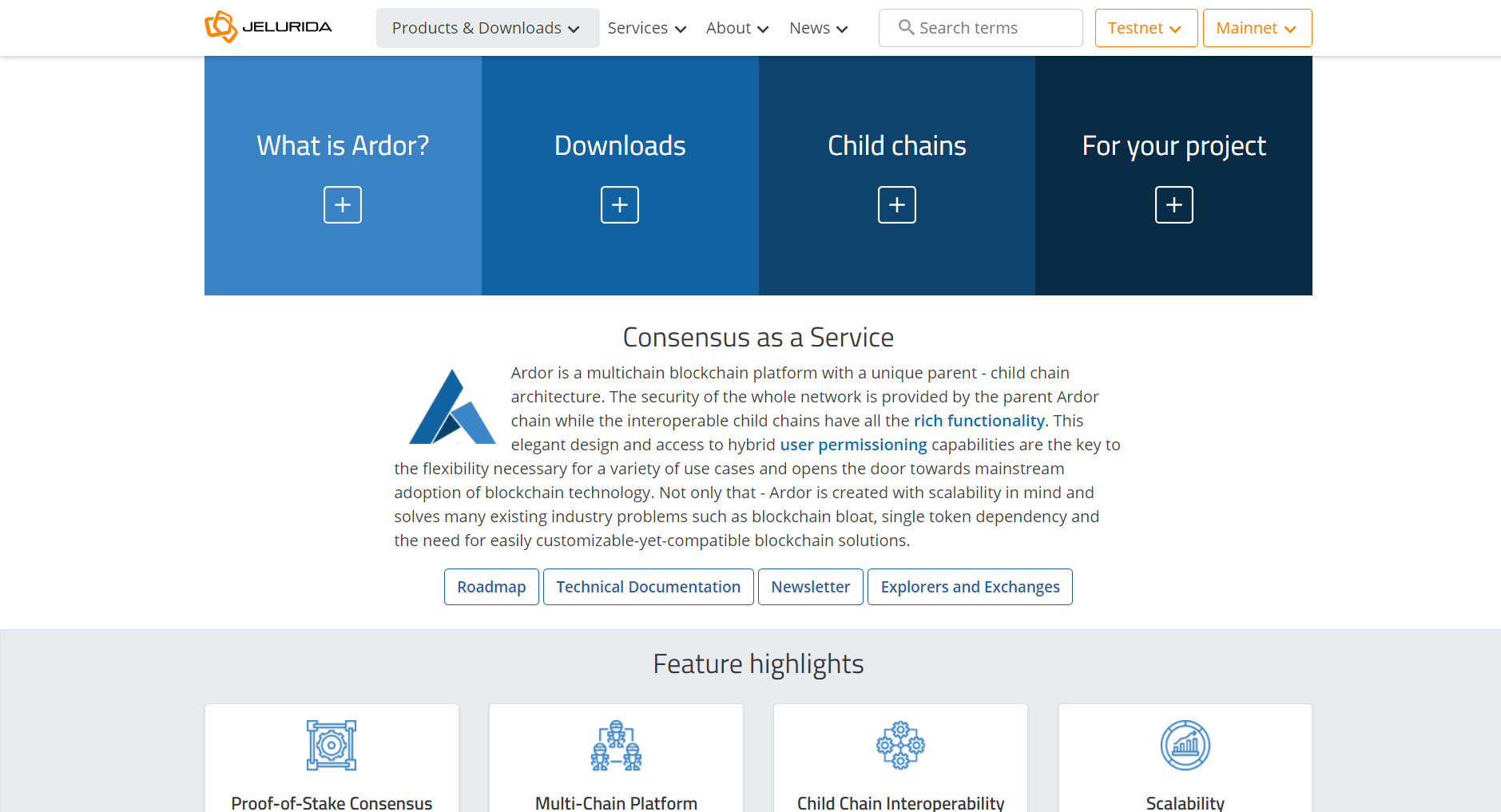
This Proof-of-Stake platform uses Java to script the Smart Contracts. The blockchain network also permits the utilization of Ignis Lightweight Contracts that takes up less space and run faster in the blockchains.
Avalanche
Avalanche is one of the fastest Smart Contract blockchain platforms. It uses a simple, popular language – Solidity, the language of Ethereum, and enables the programmer to whisk a smart contract or a dApp.

Moreover, Avalanche understands how important dApps are to get a better Web3 experience, but it also understands how trust issues can creep up without proper formal conditions implemented. Thus, Smart Contracts for dApps.
So, if you need to create Smart Contracts for your Web3 dApps – Avalanche is your best choice!
Cardano
CAR-DA-NO! Everyone knows this cryptocurrency network for mere functioning based on a peer-reviewed and scientific approach.

So, scientifically, and not just from a theoretical perspective, Cardano is more decentralized and secure simultaneously!
Finally, Smart Contracts in Cardano can use either of the two languages – Plutus and Haskell. These contracts use the Plutus Playground for the creation and later deploy into its Proof-of-Stake blockchain network.
Corda

Corda is a multi-functional, multi-party application. This blockchain platform focuses on possessing a private, secure, and scalable web space for DeFi. Cordas’ modularized framework effectively aids you, so you can avail all the help you want.
Cosmos
Cosmos is moving towards globalized tokenization of blockchains in an era where crypto-transactions are limited to their respective blockchains.

To achieve this, Cosmos offers tools such as the IBC Protocol for faster, real-time communication, Tendermint Core as a secure consensus engine, and a Cosmos SDK, a development kit for all programmers signing up for a cosmic journey!
Thus, coders of all arenas build custom decentralized dApps and blockchains.
Enigma
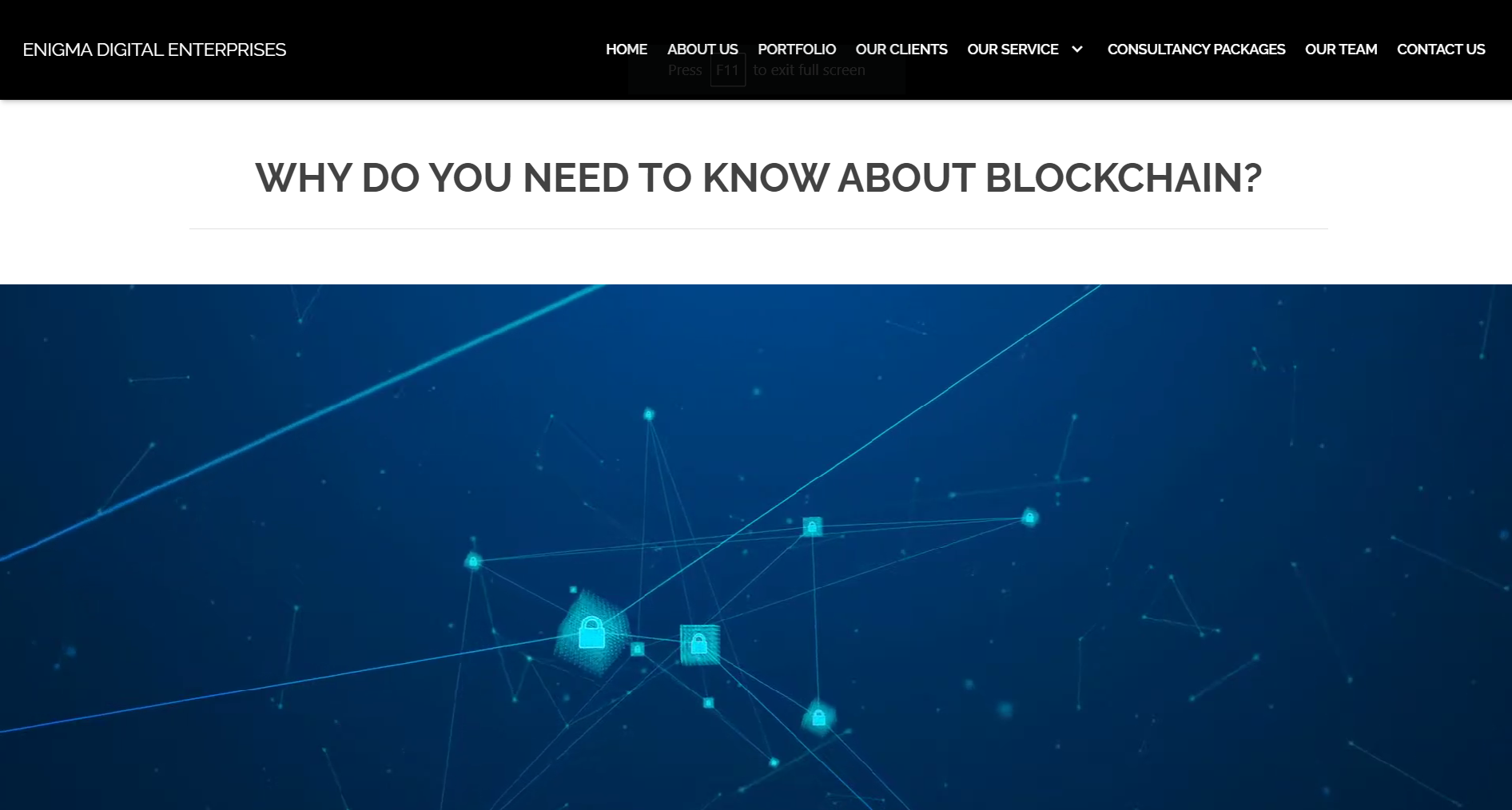
Enigma is a permissionless peer-to-peer network. With Enigma, “smart contracts” transform into “secret contracts”. The nodes do not have access to the input data in the Enigma network that execute code.
The Proof of Stake consensus layer employs Smart Contracts written in Solidity.
Ethereum
Ethereum is a platform that stores transactions of Ether(ETH) in its blockchain network.

One distinct feature of Ethereum is programmability – allowing programmers to make decentralized apps, execute Smart Contracts, and more.
Ethereums’ new version, Ethereum 2.0, recently completed its Merge on the 6th and 15th of September with the Bellatrix upgrade and Paris upgrade respectively.
In finishing, Ethereum is one of the earliest blockchains whose creation solely targets the making and execution of Smart Contracts.
Hedera
Hedera is a blockchain that can contain more than 10000+ transactions per second, sometimes so much so that it is 10x faster than other blockchains.
This Carbon negative blockchain is a 3rd generation public ledger. Powered by Hashgraph consensus, this PoS public network achieves the utmost security with blazing-fast speeds.
Smart Contracts of Solidity or Vyper allow deployment on the Hedera blockchain network.
Hyperledger Fabric
Hyperledger Fabric is distributed ledger platform that provides modular solutions for distributed ledger solutions. It is architectured to withstand pluggable implementations of many components and accommodate the complex economic ecosystem that accompanies minute intricacies.
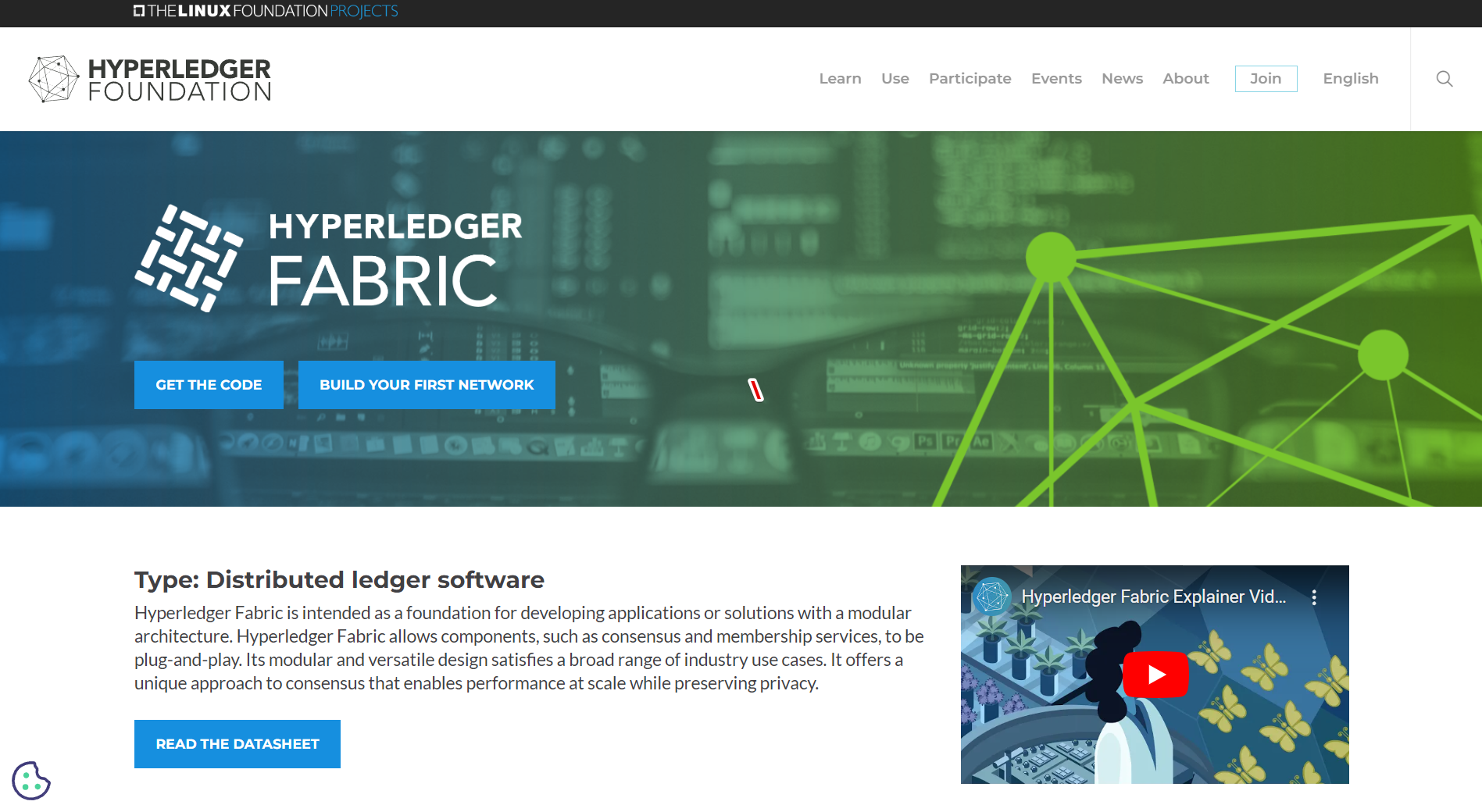
Hyperledger Fabric uses chaincode to create efficient Smart Contracts. It later deploys with the aid of an external application to the blockchain network and interacts when the function is called.
Many programming languages can use chaincode. Currently, Go, Node.js, and Java chaincode is supported.
Near
Near is a blockchain that intends to simplify working in Web3. It is Simple for Users and Simple for Developers.

Aurora, an EVM that uses Solidity, generates Smart Contracts for the Near network. Near also grants access to contracts from Solana or Terra that use Rust as its prime code language.
Many of its tools include and are not limited to the NEAR CLI, JavaScript SDK, JavaScript API, Rust SDK, and the Aurora EVM.
Happy Smart Contracting!
NEO
The Neo ecosystem has many promising features, from native oracles to self-sovereign IDs and interoperability between blockchains.

Also, Neo’s contracts utilize multiple languages, giving a range of possibilities for programmers to code the contract in a language they are comfortable with rather than learning a new language from scratch.
The contracts later get compiled in the NEF – Neo Execution Format and executes within the NeoVM, Neo’s lightweight virtual machine.
Polkadot
Polkadots’ vision is to unite and secure a growing environment of parachains.

Moreover, Services and Apps on the blockchain can communicate with intrinsic security across chains. Thus, forming the basis of interoperable decentralized Web3.
The network aims to secure information within and across permissioned and permissionless blockchains. The Smart Contracts in the blockchain run on Proof to a degree of verification on a public chain. Thus, increasing the security of information contained within before the exchange.
Smart Contracts with WASM uses all Ethereum-based tools – languages such as Solidity and Vyper to IDE and suites like Remix and Truffle.
Solana
Speed Thrills but this time it doesn’t kill. Solana is built to conduct fast transactions in a secure and scalable environment. Solana serves double-time as a framework to build contracts.

In Solana, ‘Programs’ is synonymous to Smart Contracts. Rust, C, and C++ make up the programs that later deploy on-chain. Solana programs are vital to building unique and powerful tools on-chain, but the good news is that there are already a lot of programs available for you to interact and build with.
Stellar

Heavenly as the name is, this open-source, decentralized protocol employs itself to store and move money on the blockchain platform. The top uses cases are banking, storing, and delocalizing cryptocurrency. Its star feature is low-fee and pass-border transactions between different currencies.
Terra
Terra has a promising tag of being a Secure Smart Contract Platform, which is quite true.

The Terra blockchain is a commitment-driven to the next generation of blockchain that provides complete decentralization in Web3.
The Terra WASM gives the freedom to either upload a pre-existing contract or creates a new one. Thus, allowing multiple contracts to contain the same code with a minor logic variation in each.
The Smart Contracts on Terra use Rust, with the aid of terra.js.
Tezos
An open-source ledger for cryptocurrencies with an autocorrect function.
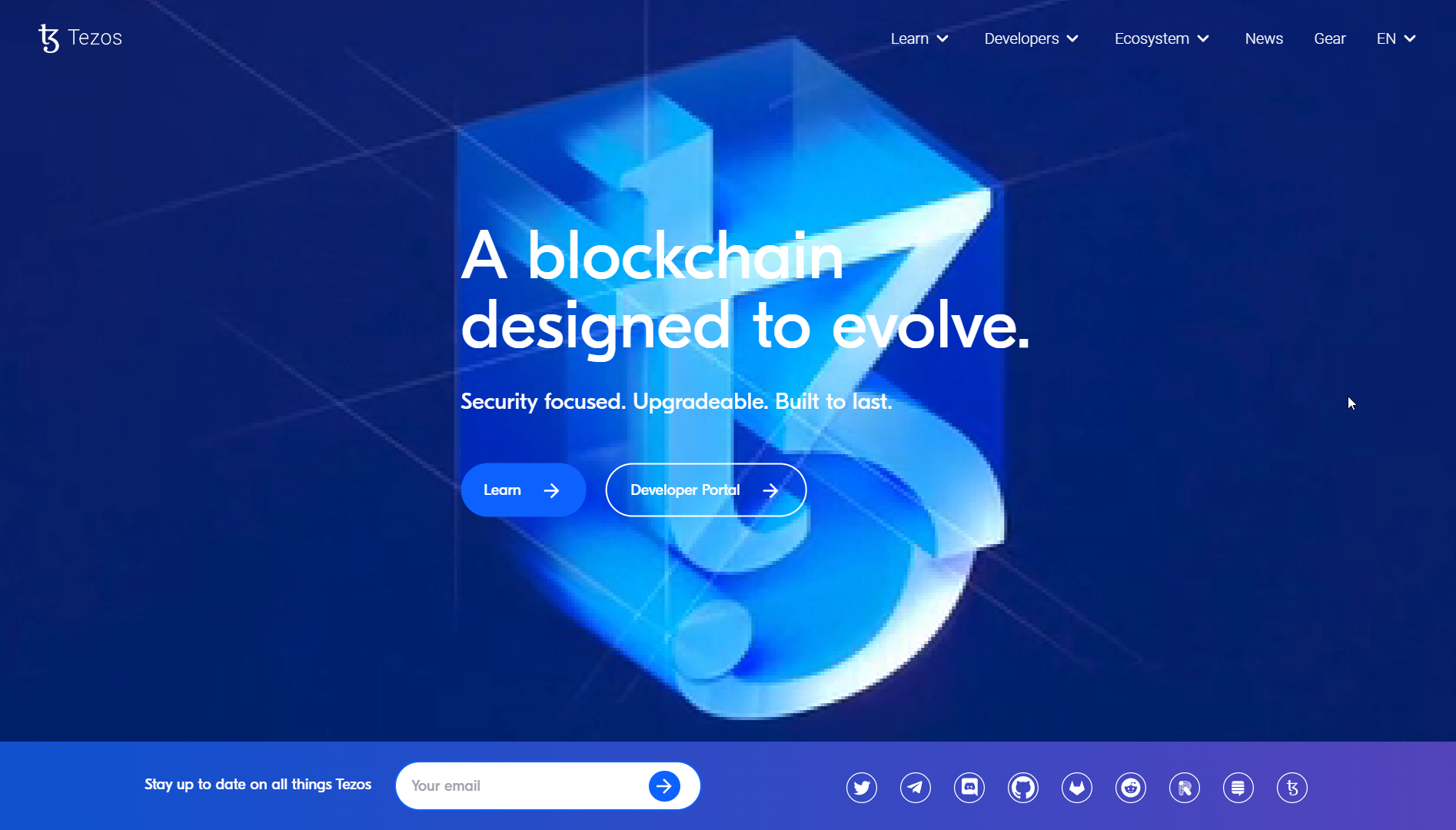
This Proof-of-Stake blockchain platform deploys Smart Contracts within the webspace for developers. It also aims for a transparent user-centric environment.
TRON

This open platform is famous for its security and durability. TRON aims to build a global paper platform with spread-out storage.
Qtum

This green, stable, fast blockchain platform lets developers attain the benefits of Ethereum and Bitcoin from their network!
Smart Contracts on Qtum use QRC20. QRC20, an analog of ERC20, is the standard API for a token within the Smart Contracts.
Like Ethereum, Qtum uses Solidity to create Smart Contracts inside the Remix IDE.
Waves

One would call this a gateway to a decentralized Web 3.0. The Proof-of-Stake blockchain rewards validators and permits Smart Contracts to run for the birth of secure transactions and dApps. Running on Ride, a non-turning language, the system remains safe and deterministic.
Languages for Smart contracts
There is a diverse range of blockchains, some fast, some secure, some working on PoS, some decentral, but all Web3. But did you know that all these blockchains being a product of Web3 might be the only common factor between them?
Many blockchains, such as Cardano, Ethereum, and Waves, tend to have a specific language to create Smart Contracts. Cardano uses Haskell, Ethereum utilizes Solidity, and Waves employs Ride in their virtual machines to deploy and integrate the Smart Contract.
Solidity
Solidity is an object-oriented, compiled language that runs on the EVM (Ethereum Virtual Machine. It’s a famous language among developers for building Smart Contracts.

One must note that this is one of the earliest programming languages created to build Smart Contracts on Ethereum.
Haskell
Haskell is employed chiefly for building Smart Contracts in Plutus Playground (IDE). This specific programming language has its own Haskell Library, whose codes are eligible on the IDE.

The Smart Contracts here get deployed in a foreseen, certain, and secure environment. It rids the developer of the need to run a full Cardano node to analyze the program code lines.
Vyper
Brought to us by Ethereum, this novel, exploratory language has few goals in mind. The goals are as simple as high security and a simplified process of creating understandable Smart Contracts.

A distinct feature of this contract-oriented language is that Vyper is a hybrid language in Ethereum. Its logic is similar to Solidity but syntactically identical to Python, without many OOP paradigms.
Python
One may consider Python to be the world’s favorite programming language. And with more than 50% of the global population familiar with this language, this fast-paced world only brings us platforms to use Python – from Smart Contracts to Web3 and beyond!
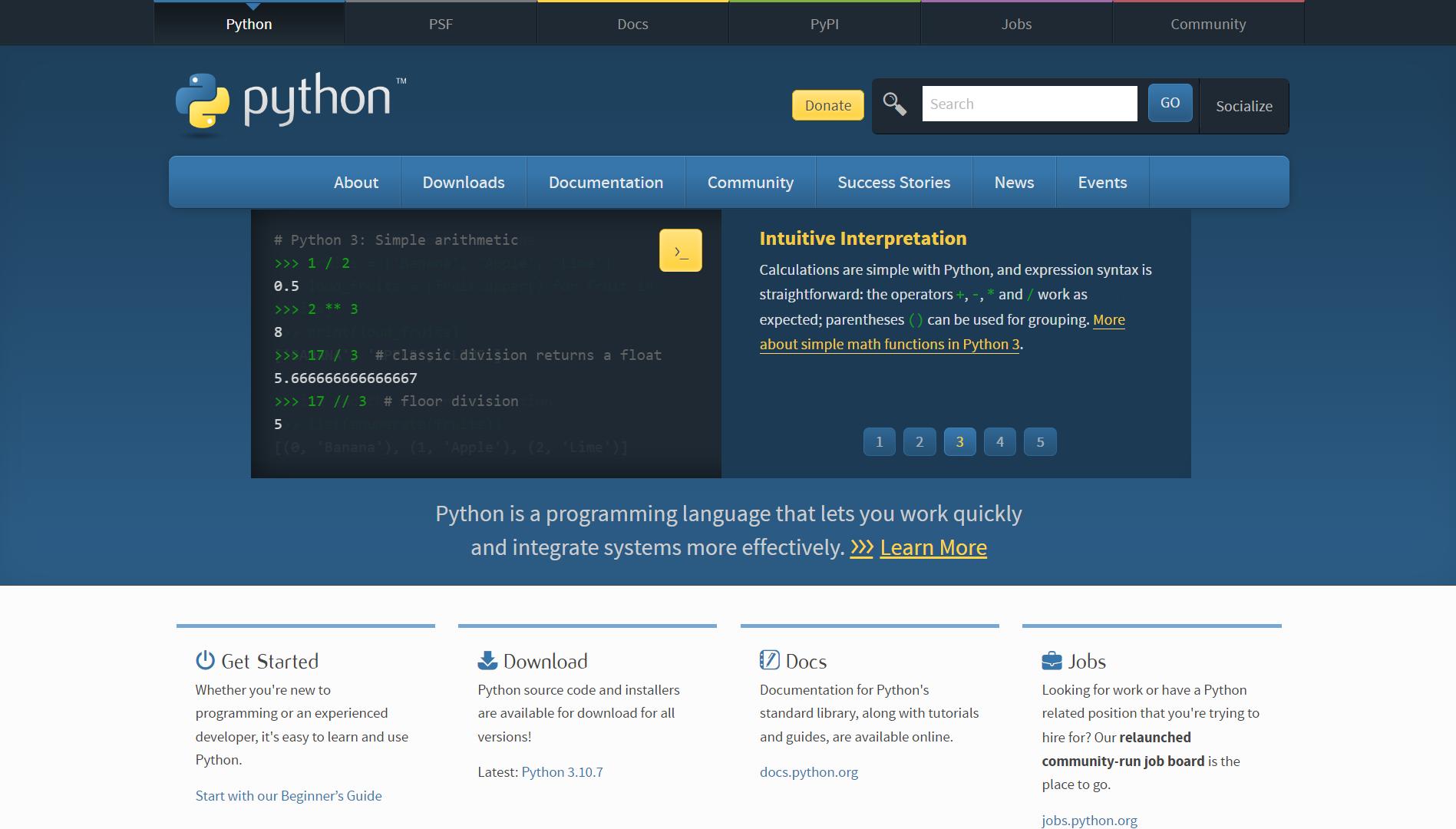
The merits of a python-based blockchain are many, from Smart Contract construction using Python to accessing architecture and having open-source support. Python is a foundation for many blockchains that run today.
Rust
Rust, as a language, is very popular amongst the blockchain community.

Four prominent blockchains, Solana, Polkadot, Elrond, and NEAR utilize this language as their first choice to create Smart Contracts.
The functioning of this programming language is smooth, although its name may suggest otherwise. Rust is a language that aims to increase efficiency and low-level control while providing developers with a great programming experience. Thus, the popularity amongst developers to create Smart Contracts.
Rust wants you to have a sleek experience while creating Smart Contracts and aims to provide a uniform coding format and shorten the time to compile and debug within its IDE.
Rust runs on WASM, which provides more than just a run machine for the Smart Contract. WASM holds the upper hand with plenty of advantages that make execution easier, faster, and more effective!
Java
One doesn’t need an introduction to the world’s most famous programming language. This high-class language is class-based, object-oriented, and generally employed to build programs, web pages, and applications.

One of the best features of Java is that the code lines can run either in its JVM or any other virtual machine to compile and process the code. Thus, giving the advantage to create Smart Contracts, deploy, test, or debug them anywhere else.
In addition, Java provides its framework – Takamaka. Takamaka is an open-source blockchain to create and execute reusable contracts. The only language that one needs to know is Java.
DID YOU KNOW: Java was initially known as Oak and renamed later when the founders found that ‘Oak’ was already registered.
Ride

Ride is a language specially designed for Waves, a community-based blockchain that permissions developers to build user-friendly dApps with open-source technology.
Libraries for Smart contracts
OpenZeppelin
OpenZepplin is an open, free platform to avail of Smart Contracts for Solidity. Building dApps and NFTs also use OpenZeppelin. It believes in striving towards an open economy and protecting the Web3 universe by giving highly secure Smart Contracts in DeFi.
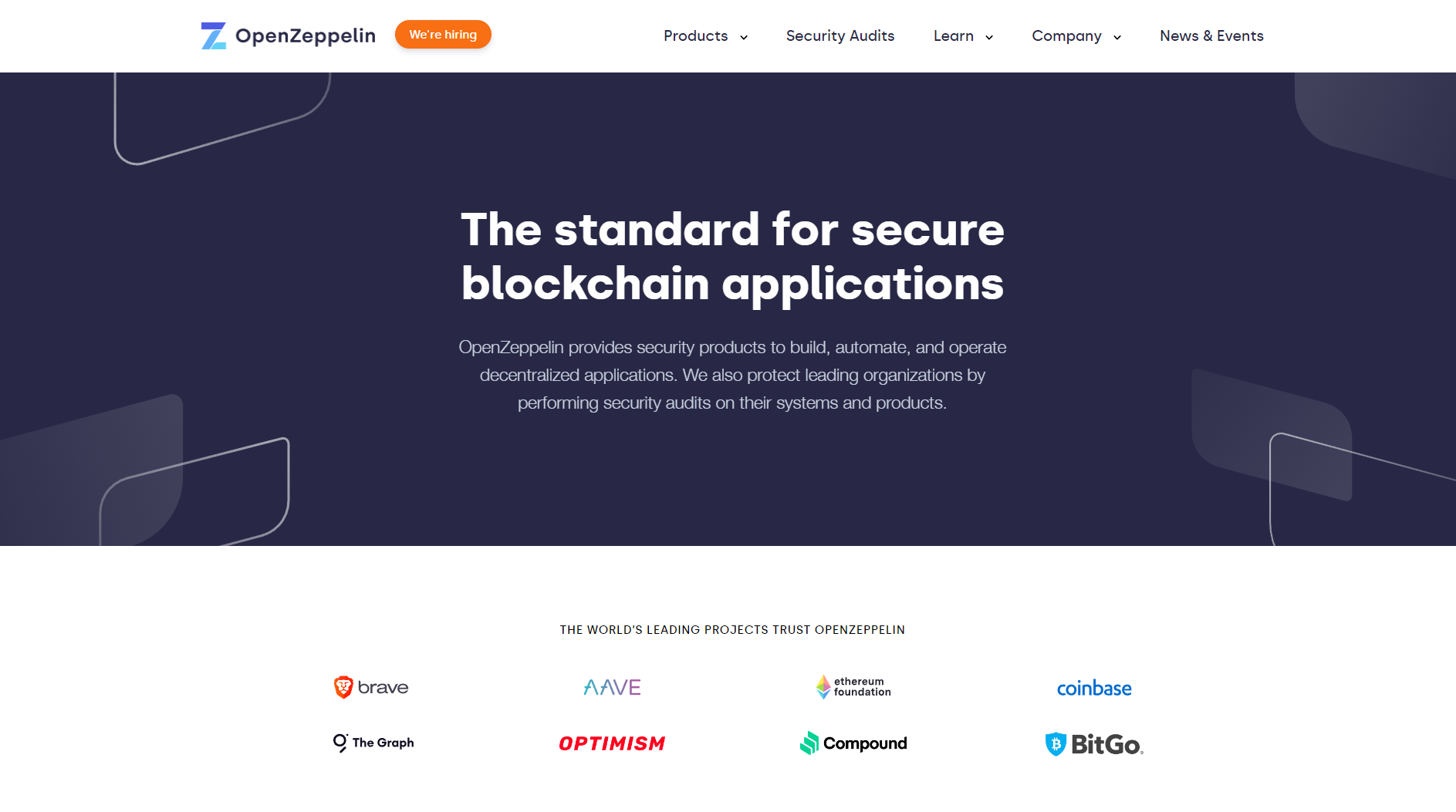
Moreover, it provides reliability, safety, and risk management for projects on Ethereum. The library conducts on-demand security audits of your code and takes necessary precautions to avoid an insecure dApp malfunctioning.
ether.js
As the name gives away, this library is full of codes in JavaScript for ether.io. This library provides easy access to data used in making JavaScript-based wallets. All JavaScript code lines written are Ethereum (EVM) compatible.
Drizzle

Provided by the Truffle Suite, Drizzle is a cohort of front-end codes. This is useful to synchronize contracts with the UI within dApps. This ensures that all the transactions occurred are secure and in sync.
web.js
web.js is a JavaScript library that aids in integrating and interacting with Ethereum. This community-driven library is comprehensive and modular; ready to serve you to build a better Web 3.0
web.py
This Python library helps integrate and interact with Ethereum. Based on the web3.js API, this library needs to connect to the Ethereum Node to function like its predecessor – web3.js.
OpenBrush

OpenBrush is a Rust library for Smart Contract development on ink! Rust is a primary language for five major blockchains, and to support the executing function of contracts on the blockchains, OpenBrush imitates to analogize OpenZeppelin for Rust.
Merits of Smart Contracts
A. Inflexible
The property of immutability in Smart Contracts is what sets them apart while providing us the assurance that it’s secure to sign a contract and that the conditions will never change at any point in time.
B. The more, the merrier!
Smart Contracts are intangible contracts that run on the internet. It can be between two parties, a party, and an organization, or between two organizations. The only condition is everyone participating in the contractual transaction must provide their digital signature for the contract to be valid.
C. Blockchain flexibility!
Want to deploy your Smart Contract on Ethereum? Go on. On Algorand? Green signal!On Cardano? Only if you’ve written the contract in Haskell. Umpteen languages can make up Smart Contrcats and deploy on any blockchain you like. [Except Bitcoin, sorry.]
D. Code is Law
The Code Is Law. The construction of Smart Contracts is such that they obey the commands within the code lines. The execution follows the code lines to the T and follows everything. If the code does not abide by the contract doesn’t self-execute.
E. No middlemen
There’s no one stopping you, your dealer party, and your deal from happening. Smart Contracts don’t have third-party interference in the picture unless it’s a validator from the blockchain who’ll be handing out copies of the contract to involved personnel.
Neither can anyone change, tamper or alter to their benefit nor can anyone display biasness towards a party and influence the deal.
F. Default backup
A backup of the Smart Contract is always present in the blockchain at the source node, so it redistributes to all nodes/ servers of the parties concerned.
Demerits of Smart Contracts
There are pros, and there are cons to everything that exists. Here are some of the cons of Smart Contracts below:
A. To err is human, but errors in Smart Contracts cannot change.
Changes in the Smart Contracts’ code lines are not possible after their deployment on the blockchain. In essence, a contract must have zero faults or errors during its creation. The coder must be aware of <syntax! and hvae zreo errores in their code. They definitely cannot skip some of the conditions during which the contract shall deploy.
B. Language Barrier
Smart Contracts’ creation employs low-level languages such as Solidity or Rust. But, we have certain platforms that require learning specific languages such as Ride or Haskell that are very specific to blockchains such as Waves or Cardano.
On top of that, one must comprehend computing languages to further understand how codes execute themselves. One must know these so that the code lines written in the Smart Contract implement aptly.
C. Technique. Technician. Technicality.
In an event, two writers in the metaverse plan to co-author a book. Maybe even sign a deal with say, Harper Collins or Penguin publishing. Who will write the Smart Contract with the conditions necessary for deployment? The authors? Or the publishing house?
An intermediate, unless they’re writing a textbook on Smart Contracts and can write the code lines themselves.
Furthermore, the variety of languages also poses a barrier – which language to write in? Which blockchain to deploy in?
D. “Give me my space” – That’s what Smart Contracts said!
Sometimes, Smart Contracts, being self-executing, can set off conditions wherein other Smart Contracts are in deployment. This creates a necessity for space in the blockchain, and let’s be honest, space in the blockchain is like fresh water – it’s a finite resource.
Top Uses of Smart Contracts
- NFT exchange
- Real estate
- Document preservation and accessibility
- Administrative payments and billing
- Statistics collation
- Digital Identity
- Trade Finance
- Financial Data Recording
- Supply Chain Management
- Clinical Trial
- Trading activity
- Financial Security
- Financial Service
- Government
- Insurance
- Escrow
- Mortgage System
- Health and agricultural supply chains
- Real estate and crowdfunding
- Identity management
Summary
Smart Contracts are reusable pieces of code that contain certain criteria for their execution to occur. These contracts are analogous to a real, tangible, formal contract that’s present in the world.
Moreover, These code lines can exist between two or more parties who are either individuals or part or whole of organizations. The contract behaves as a singular node on the blockchain and analyzes the transactions that occurred between the concerned parties.
Also, the final transfer and closure of the contract occur only after all the agreements/ conditions satisfy.
Smart Contracts contain Data and Code. Some of the features are that it cannot change after its deployment and is verified before its execution into the blockchain.
Not to mention, there are 15+ blockchains, 7+ prominent languages, and 6 most commonly used libraries to create Smart Contracts.
Everything has merits and demerits. Smart Contracts come with an abundance of pros and cons in Web3. But most of all, 13+ uses of Smart Contracts come from trading, finance, healthcare, and security.

